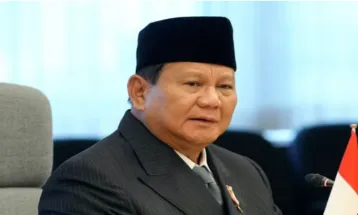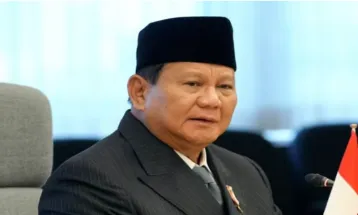The Importance of Golok for Betawi People

SEAToday.com, Jakarta-Golok is a traditional machete-like weapon in Nusantara. Other than being used for self-defense, golok is also used to help with daily tasks such as gardening and slaughtering animals.
However, in the eyes of the Betawi people, golok is perceived as a sacred weapon. It must be used with careful consideration, and a Betawi man is not complete without his golok.
Golok is very popular among the Melayu people. It can be easily found throughout Nusantara. It has different names in different regions of the archipelago. Take for example in Jakarta.
Golok has turned into an important part of the Betawi people's lives. The Betawi people are familiar with two types of golok since the colonial era: Golok gablongan and golok sorenan, with the latter being golok used for self-defense.
Golok's popularity dimmed the spotlight on other weapons in the land of the Betawi people, especially because golok sorenan is used by Betawi fighters, called jago, as a sacred weapon for self-defense.
Jago can carry out Betawi self-defense called maen pukulan. Jago is classified into a few categories, depending on why they learned self-defense. Some learn self-defense to defend themselves and others learn self-defense to protect the weak ones, like Entong Gendut.
There are also people who learn self-defense to prosper themselves, like Dutch guards, who were called centeng-centeng.
Betawi men deemed golok as a symbol of charisma. Therefore, many people started to learn self-defense.
Those who learn the maen pukulan self-defense were usually asked to bring two golok. One is for the study, and the other is for themselves. However, they couldn't use the golok in front of the public.
"The men of Betawi perceive golok as a sacred weapon that can't be seen, let alone used, in front of the public. Golok is tucked on the waist and covered with the clothing. If they ever got in trouble and couldn't find a peaceful solution, they should just let their opponent see the tilted golok handle on their waist, symbolizing that they were ready to fight," said Betawi culturist G. J. Nawi in the book "Maen Pukulan: Pencak Silat Khas Betawi" (2016).
Golok are only used for emergency or life-threatening circumstances, and to support silat self-defense. It can be seen in the many fights against the Dutch in the land of the Betawi people.
The jago helped the farmers fight the Dutch who raised taxes unreasonably, making golok a symbol of resistance against the Dutch colonialization.
Used with Careful Consideration
Golok's popularity increased along with the maen pukulan's streams, from silat beksi to cingkrik. Betawi men are familiar with their religion since childhood.
Parents asked their children to go to Quran studies, then the children studied silat afterwards. They studied various maen pukulan moves in silat. Then, it was passed down from generation to generation.
Betawi culturist Masykur Isnan confirmed it. He said two important things in Betawi people's lives are learning the Quran and becoming good at self-defense. They learn the Quran so that they could understand Islam better, and self-defense helps them avoid evil.
It made the Betawi people see golok as something valuable. Golok's anatomy then had a whole new meaning.
"Golok has spiritual values among the religious Betawi people. Its handle symbolizes the foundation of life, its blade symbolizes bravery, its cloth symbolizes Islam," said Masykur Isnan when contacted by SEAToday.com, April 23, 2024.
Despite being important, the use of golok is not the main component in self-defense, but rather the mastering of the moves.
Masykur Isnan explained, those who owns a golok must understand their religion and self-defense. Without that, the use of golok would be just another attraction, harming oneself instead of the enemy.
"Golok without the moves is nothing, it can only be spun around to the right, to the left, to the front, upward, and downward," wrote Gres Grasia Azmin in the book "Memori Kolektif Orang Betawi dalam Maen Pukulan Beksi Tradisional H. Hasbullah" (2023).
Recommended Article
Insight Indonesia
TNI Law Amendments Officially Passed by Parliament
The Bill on Amendments to Law Number 34 of 2004 on the Indonesian National Armed Forces (TNI) has been approved
President Prabowo Leads Meeting on Downstream Industry Accelerati...
President Prabowo Subianto held a limited meeting with several cabinet ministers at his residence in Hambalang, Bogor
Japan's Prime Minister Supports Indonesia to Become a Member of O...
Japan's Prime Minister, Shigeru Ishiba, expressed his support for Indonesia's efforts to become a full member of the Organization for Economic Cooperation and Development (OECD), which currently consists of 38 countries...
Muhammadiyah: Ramadan 2025 Begins March 1, Eid Falls on March 30
Muhammadiyah Central Leadership (PP), Tuesday (7/1), officially set the beginning of Ramadan 1446 Hijri on March 1, 2025. Meanwhile, Eid al-Fitr or Lebaran will fall on March 30, 2025.
Popular Post
SOEs Ministry Tries Out Four Days in Workweek System
The State-Owned Enterprises (SOEs) Ministry is testing the implementation of a four-day workweek. This was shared on Instagram @lifeatkbumn on Saturday (6/8).
TransJakarta Extends Operational Hours of Soekarno-Hatta Airport...
TransJakarta extended its service time until midnight for the corridor with destination to the Soekarno-Hatta International Airport, starting Wednesday (6/19).
Trending Topic
Weather Forecast
Weather Forecast Today: Light Rain in Some Cities
Light rain has the potential to fall in several major cities in Indonesia on Friday (2/5/2025) today.
Weather Forecast Today: Some Cities Are Expecting Light Rain
Several major cities have the potential to experience light rain on Tuesday (8/4/2025) today. Check out the following explanation.
Potential Extreme Weather to Hit Western Indonesia
The Meteorology, Climatology, and Geophysics Agency (BMKG) has identified the potential for extreme weather in western Indonesia
The Meteorology, Climatology, and Geophysics Agency (BMKG) Predic...
The Meteorology, Climatology, and Geophysics Agency (BMKG) predicts that high-intensity rainfall will continue until March 11. Although a slight decrease in intensity is expected in the coming days due to weather modific...




































